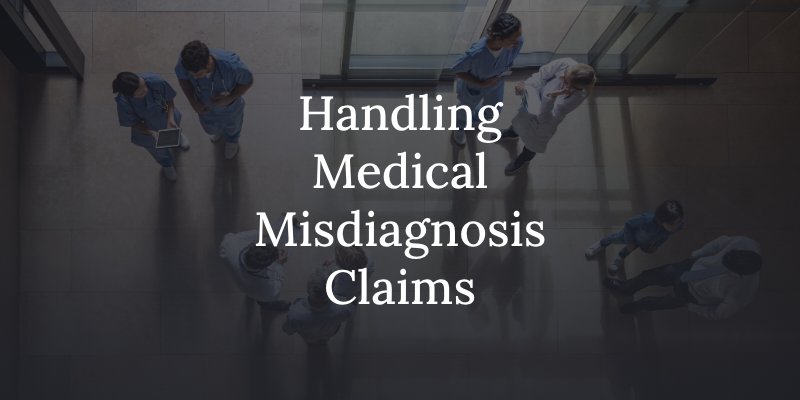Misdiagnosis is one of the most common types of medical errors. Medical studies indicate that as many as 800,000 Americans suffer serious harm, including disability or death, due to misdiagnosed illnesses and injuries each year. The medical community requires doctors to meet the industry’s accepted level of care, including correctly assessing symptoms, ordering appropriate diagnostic tests, and accurately interpreting test results for prompt, precise diagnosis. When a doctor or other provider fails in this duty, it’s medical malpractice. Knowing how to handle a medical misdiagnosis helps to minimize the adverse impact and provides a pathway to financial accountability and justice.

What is Medical Misdiagnosis?
When a doctor misinterprets a patient’s symptoms and diagnoses them with a condition that differs from their true medical condition, illness, or injury, it’s a misdiagnosis. For example, if an emergency room doctor diagnoses a patient’s severe head pain as a migraine when they are actually experiencing a stroke, it is a misdiagnosis. Medical misdiagnosis often results in a worsened medical outcome, including disability, impairment, shortened life expectancy, or death. These adverse outcomes of medical misdiagnosis occur due to the impacts of misdiagnosis, such as a patient receiving the wrong treatment, delayed treatment for their true medical condition, or receiving no treatment at all.
What Should I Do After a Medical Misdiagnosis?
It’s distressing and sometimes frightening to learn that a doctor you trusted with your care and your life itself misdiagnosed your medical condition, resulting in an adverse outcome. It’s important to address a medical misdiagnosis as soon as you become aware of the problem by doing the following:
- First, undergo a complete medical assessment by a trusted physician who is unassociated with the medical facility in which the misdiagnosis occurred
- Then, carefully follow the trusted doctor’s treatment recommendations
- Obtain a copy of your medical records and the physician’s notes from the facility where the misdiagnosis occurred
- Obtain a copy of your most recent physical examination from before the misdiagnosis and the medical record of your examination by the unaffiliated provider after the misdiagnosis
- Hire a medical malpractice attorney before speaking to the at-fault medical provider’s insurance company representative or attorney
It’s important not to accept an early settlement offer without first hiring a medical malpractice attorney. Medical malpractice insurance adjusters often reach out with low settlement offers before the injury victim knows the full extent of the damages they face from the misdiagnosis. Instead, hire an experienced medical malpractice attorney and then direct all communication with the insurance company, medical provider, medical facility, or opposing attorney to your lawyer.
Understanding Medical Malpractice In Misdiagnosis Cases
Doctors and other medical providers have a legal obligation to treat patients in the manner that is accepted by those in the medical community, or the way another reasonable doctor would have under the same circumstances. Proving liability for medical malpractice requires demonstrating the following with clear and compelling evidence:
- A doctor/patient relationship was in effect at the time the malpractice occurred
- The doctor owed a duty of care to the patient to treat them in the manner that’s accepted by the medical community
- The doctor breached this duty of care through negligent misdiagnosis
- The breach of duty directly caused injury or a worsened medical outcome to the patient
- The patient suffered significant physical and economic damages from the misdiagnosis
Common damages recovered in medical misdiagnosis cases include reimbursement for medical expenses, future medical costs related to the harm, past and future income loss, and compensation for pain and suffering. If medical malpractice causes fatal harm to a patient, their close surviving family member may recover compensation through a wrongful death claim against the provider.

